Time:2025-07-10
The Era of Precision in Edge Illumination
In the realm of architectural and decorative lighting, high-precision cuttable neon flex for edges has emerged as a transformative solution for designers, architects, and DIY enthusiasts seeking to achieve flawless illuminated edges. These specialized neon flex strips are engineered to deliver unmatched precision in cutting and installation, enabling seamless integration along complex edges, curves, and narrow spaces. Unlike generic neon strips, high-precision variants feature advanced cutting technology, ultra-flexible designs, and durable construction, making them ideal for applications where accuracy and aesthetic consistency are paramount.
From enhancing the sleek edges of modern furniture to creating intricate illuminated contours in commercial signage, high-precision cuttable neon flex redefines what’s possible in edge lighting. This article explores the technical innovations, design advantages, and diverse applications of these strips, providing a comprehensive guide for leveraging their precision-driven capabilities.
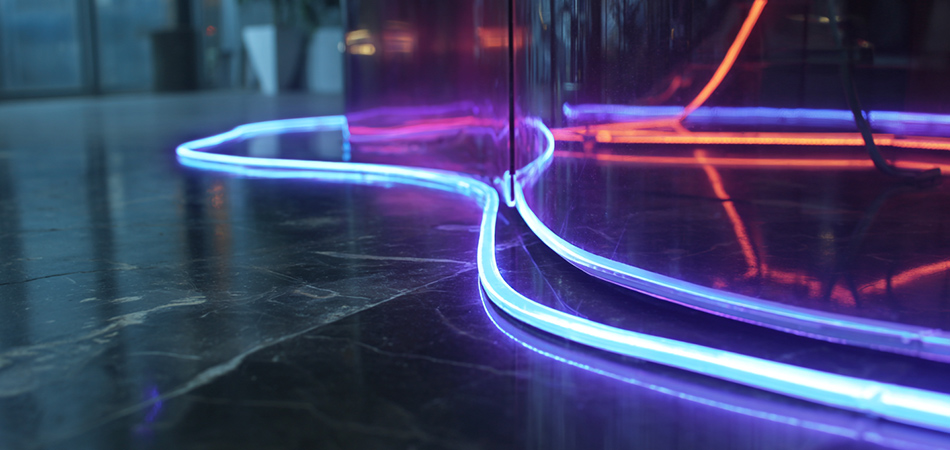
Technical Excellence: What Defines High-Precision Cuttable Neon Flex?
Core Engineering for Precision Cutting
Micro-Precision Cut Points
High-precision neon flex features factory-calibrated cut points spaced at ultra-fine intervals (typically every 10-20mm), marked with laser-engraved indicators. These points align with the strip’s internal circuitry, allowing users to trim the flex to exact lengths using specialized tools or high-precision cutters. Unlike standard cuttable strips, the electrical contacts at these points are reinforced with micro-soldered pads, ensuring minimal resistance and uniform light output even after repeated cutting.
Ultra-Flexible Substrate Design
Nano-Flex PCB Technology: The flexible printed circuit board (PCB) is engineered with a thin, bendable substrate that supports tight-radius bending (as low as 10mm in some models), critical for navigating sharp edges or curved surfaces.
Slim Profile Construction: Most high-precision strips feature a width of 5-8mm, enabling installation in narrow gaps or along delicate edges without compromising structural integrity.
Premium LED Integration
Dense LED Placement: LEDs are mounted at close intervals (e.g., every 10mm) to ensure continuous, uniform illumination along cut segments, eliminating dark spots often seen in lower-precision strips.
Color Consistency Technology: Advanced wavelength-matching algorithms ensure that cut segments maintain identical color temperature and brightness, essential for large-scale edge lighting projects.
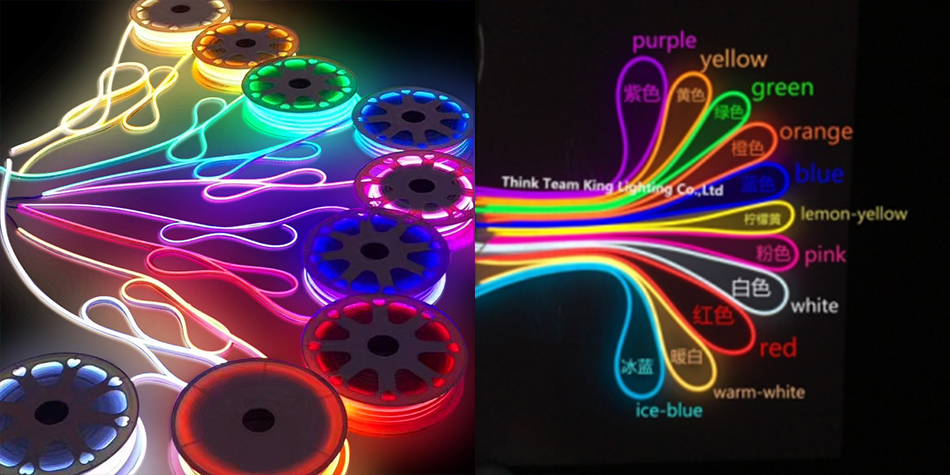
Key Features for Edge-Centric Applications
Edge Conformity Design
Beveled Outer Casings: Many models feature streamlined silicone or PVC casings with angled edges, allowing the strip to sit flush against 90-degree corners or curved surfaces without gaps.
Magnetic Alignment Guides: Some high-precision kits include magnetic mounting brackets that automatically align the strip along metal edges, reducing installation errors.
Durability for Edge Environments
Impact-Resistant Coatings: A protective layer on the strip’s surface resists scratches and abrasions, vital for high-traffic edge locations like stair nosing or counter edges.
Weatherproof Sealing: IP67-rated variants feature fully encapsulated PCBs and waterproof connectors, making them suitable for outdoor edge applications like building facades or pool coping.
Electrical Precision
Low-Voltage Stability: Operating at 12V or 24V DC, these strips include built-in voltage regulators to maintain consistent brightness even when cut to micro-lengths.
Minimal Voltage Drop: Specialized copper traces in the PCB minimize energy loss, ensuring that the farthest cut segment receives full power, critical for long edge runs.
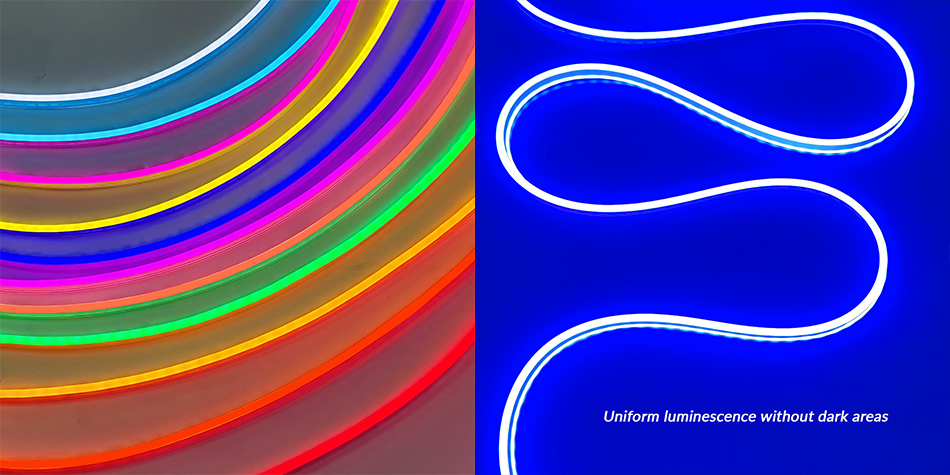
Advantages Over Standard Neon Flex for Edges
Unmatched Design Precision
Custom Edge Shapes: Perfect for intricate edge profiles, such as curved countertops, angular shelving, or architectural moldings, where standard strips would crease or fail to conform.
Seamless Joints: High-precision connectors create invisible joins between cut segments, essential for maintaining the illusion of a continuous illuminated edge.
Installation Efficiency
Tool-less Micro-Cutting: Some strips allow hand-held precision cutters to trim at marked points without measuring, reducing installation time by up to 30% compared to generic strips.
Self-Aligning Adhesives: Premium adhesive backing with edge-guiding grids helps users position the strip exactly along edge contours, even for first-time installers.
Long-Term Performance
Fatigue-Resistant Bending=: The flexible PCB is tested for 10,000+ bend cycles, ensuring no cracking or LED failure along frequently adjusted edges like movable furniture or retractable displays.
Color Stability: UV-resistant coatings prevent color fading in edge locations exposed to direct sunlight, such as storefront awnings or outdoor signage edges.
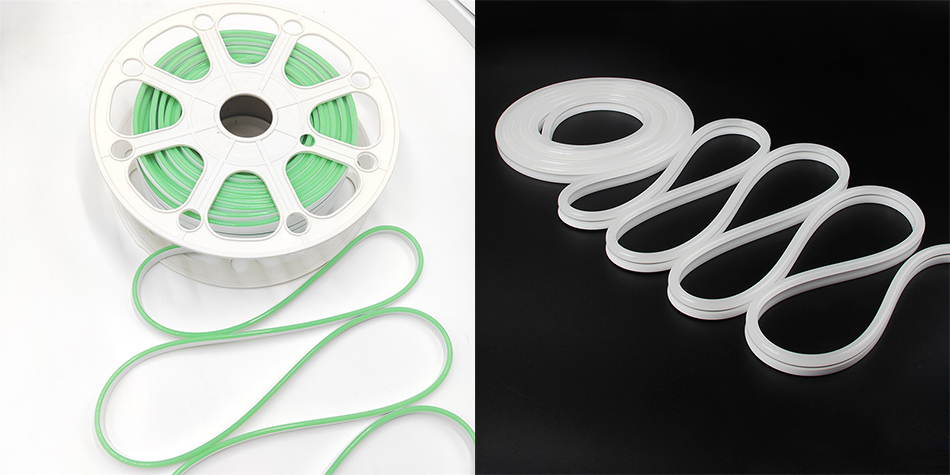
Diverse Applications of High-Precision Cuttable Neon Flex for Edges
Architectural Interiors
Edge Accent Lighting
Cabinetry & Shelving: Trim strips to fit the exact length of kitchen cabinet edges, bathroom vanities, or bookshelves, creating sleek, shadow-free illumination.
Staircase Edges: Install along stair nosing for safety and style, with weatherproof variants suitable for outdoor staircases.
Decorative Moldings
Ceiling Cornices: High-precision cutting allows the strip to follow ornate crown moldings, enhancing architectural details with soft, diffused light.
Mirror Edges: Create frameless illuminated mirrors by trimming the flex to the mirror’s exact perimeter, ideal for hotels, salons, or luxury bathrooms.
Commercial & Retail Design
Display Edges
Retail Shelving: Highlight product displays with precision-cut strips along shelf edges, drawing attention to merchandise without overwhelming the space.
POP Displays: Create dynamic edge lighting for point-of-purchase displays, easily reconfigurable for seasonal promotions by cutting and reusing segments.
Signage & Branding
Channel Letter Edges: Trim strips to fit the internal or external edges of channel letters, providing uniform backlighting or halo effects with precise corner transitions.
Storefront Fascia: Outline building facades with weatherproof neon flex, cut to follow the exact contour of architectural edges for a cohesive brand presence.
Industrial & Functional Edges
Equipment & Machinery
Workbench Edges: Install low-voltage strips along workbench edges for task lighting, with precision cutting ensuring a perfect fit around tool storage compartments.
Safety Edges: Use high-visibility color strips along the edges of industrial machinery or conveyor belts, cut to length for hazard marking.
Transportation Interiors
Vehicle Interiors: Trim strips for car dashboard edges, RV cabinetry, or aircraft overhead bins, with flexible designs that conform to curved surfaces in tight spaces.
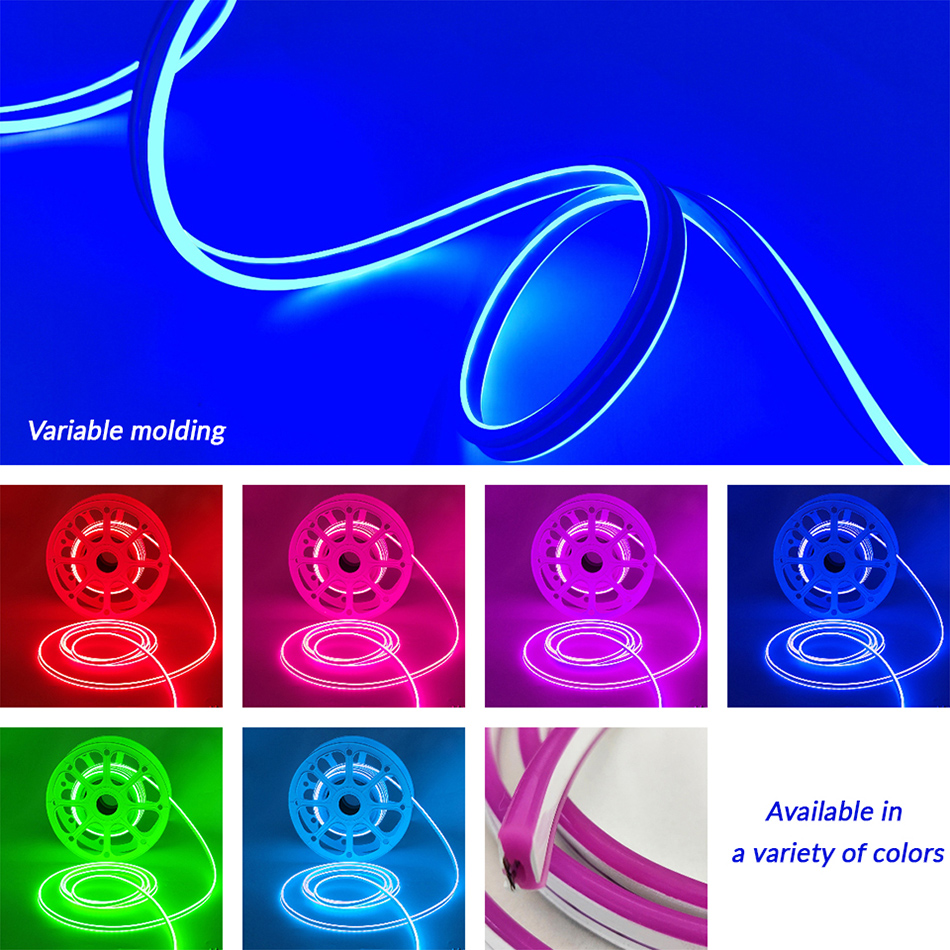
Installation Best Practices for Edge Applications
Pre-Installation Preparation
Edge Measurement: Use digital calipers or flexible rulers to measure edge contours, noting any acute angles or radii that require precision cutting.
Material Compatibility: Ensure the strip’s adhesive or mounting hardware works with the edge material (metal, wood, glass, or plastic), using primer for non-porous surfaces like acrylic.
Precision Cutting Technique
Tool Selection: Use micro-tip cutters or laser cutters for ultra-fine cuts at marked intervals, avoiding 撕扯 the strip during trimming.
Edge Alignment: Place the strip along the edge with temporary masking tape before final adhesive application, ensuring the cut segment matches the edge’s geometry.
Mounting for Edge Stability
Adhesive Application: Apply pressure evenly along the strip’s back, starting from the center and moving outward to eliminate air bubbles, critical for edge surfaces where visibility of the strip is minimized.
Mechanical Reinforcement: For heavy or outdoor edges, use precision-engineered clips spaced every 150mm to prevent sagging, especially along horizontal edges.
Electrical Integration
Connector Placement: Position connectors at non-visible points along the edge (e.g., inside cabinet corners) to maintain a clean aesthetic.
Power Supply Proximity: Locate power supplies within 5 meters of the longest cut segment to minimize voltage drop, using impedance-matched cables for edge runs over 10 meters.
Choosing the Right High-Precision Cuttable Neon Flex
Edge Application Requirements
Edge Geometry: For sharp 90-degree edges, choose strips with a minimum bend radius that matches the edge angle; for curved edges, opt for nano-flex PCB variants.
Environmental Conditions: Select IP67-rated strips for outdoor edges exposed to rain or humidity, and impact-resistant models for high-traffic edge locations.
Precision Features to Prioritize
Cut Point Interval: Look for intervals ≤20mm for intricate edges, and laser-engraved marks for visibility during cutting.
LED Density: Higher LED density (e.g., 60 LEDs per meter) ensures uniform illumination on short cut segments, essential for small edge applications.
Certification & Compliance
Safety Standards: Prioritize strips with CE, UL, or IEC certifications, especially for commercial edge installations where electrical safety is critical.
RoHS Compliance: Ensure lead-free and halogen-free components for indoor edge applications in residential or hospitality settings.
Supplier Expertise
Edge-Specific Kits: Choose suppliers offering kits that include edge-mounting accessories (e.g., corner brackets, edge clamps) and precision cutting tools.
Customization Services: Suppliers with in-house engineering teams can provide pre-cut strips for complex edge profiles, reducing on-site cutting errors.
Addressing Common Edge Installation Challenges
Challenge 1: Uneven Light Distribution on Short Cut Segments
Root Cause: Inadequate LED density or improper cutting outside marked points.
Solution: Select strips with uniform LED spacing and always cut at manufacturer-designated intervals; test cut segments with a power supply before installation.
Challenge 2: Adhesive Failure on Smooth Edges
Root Cause: Low-tack adhesive or improper surface preparation.
Solution: Use double-sided acrylic tape with high shear strength, and clean edges with isopropyl alcohol to remove oils or dust before mounting.
Challenge 3: Difficulty Conforming to Compound Curves
Root Cause: Stiff strip substrate or incorrect bend radius.
Solution: Opt for nano-flex PCB strips with a bend radius ≤15mm, and warm the strip gently with a hairdryer to enhance flexibility during installation on complex curves.
Challenge 4: Voltage Drop on Long Edge Runs
Root Cause: Undersized wiring or inadequate power supply capacity.
Solution: Use 22AWG or thicker cables for edge runs over 5 meters, and calculate power supply requirements based on the total wattage of all cut segments.
Innovations Shaping High-Precision Edge Lighting
AI-Powered Cutting Systems
Smart Cutters: Emerging tools use AI to scan edge contours and automatically trim strips to precise lengths, reducing human error in complex edge profiles.
AR Layout Guides: Mobile apps with augmented reality overlay help users visualize strip placement along edges before cutting, ensuring perfect alignment.
Advanced Materials
Graphene-Enhanced Flex: Experimental strips with graphene-infused PCBs offer 50% better heat dissipation and twice the bend lifespan, ideal for high-performance edge applications.
Transparent Conductive Layers: New casings allow the strip to blend invisibly with glass or acrylic edges, creating the illusion of floating illumination.
Micro-Controlled Edge Lighting
Addressable LED Arrays: High-precision strips with individually addressable LEDs enable dynamic edge effects, such as scrolling text along storefront edges or color-changing stair edges.
Edge-Sensor Integration: Strips with built-in proximity sensors auto-illuminate when motion is detected along edges, enhancing safety and energy efficiency.
Conclusion: Redefining Edge Design with Precision
High-precision cuttable neon flex for edges represents a leap forward in lighting design, offering unmatched accuracy, adaptability, and durability for edge-centric applications. By combining micro-precision engineering with user-friendly cutting technology, these strips empower designers and installers to transform ordinary edges into stunning illuminated features, whether in residential interiors, commercial spaces, or industrial environments.
As the demand for seamless, customized edge lighting grows, the innovation in high-precision neon flex continues to expand possibilities. From invisible joins on architectural moldings to dynamic edge effects in retail displays, these strips prove that precision is not just a feature—it’s the foundation of modern edge illumination. By choosing the right product and following best practices, anyone can elevate edge design to new heights, where every contour becomes an opportunity for precision-driven creativity.